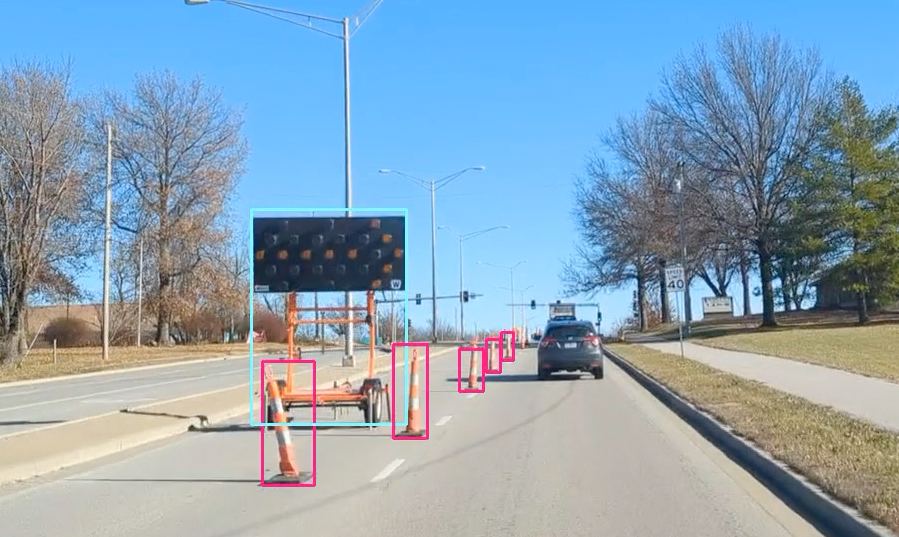Enhancing Work Zone Safety in the Age of ADAS

National Work Zone Awareness Week (April 21-25, 2025) reminds us: "Respect the zone so we all get home." Work zone safety is critical, yet challenging, especially with the rise of Advanced Driver Assistance Systems (ADAS) in modern vehicles. While technology offers safety potential, it also introduces complexities when navigating work zones.
The Dual Challenge: Human Drivers and Automated Systems
Work zone safety statistics are concerning. Despite a recent dip, fatalities have risen significantly since 2010, with 891 deaths in 2022 alone. Each statistic represents a preventable tragedy affecting workers and travelers.
Today's challenge is amplified by ADAS. Most new cars use cameras for lane-keeping, relying heavily on clear lane markings as "ground truth". Work zones often disrupt this with temporary layouts, inadequate markings, or poor delineation. When permanent markings aren't masked or temporary ones are unclear (due to factors like sun glare or wear), both human drivers and ADAS can become confused, leading to dangerous situations in already constrained environments. Even advanced AI-based systems, while improving, can struggle with poorly designed work zones.
Bridging the Gap with Work Zone Analytics
Platforms like ViaSight's Work Zone Analytics offer a data-driven solution. This technology helps infrastructure owners create safer work zones compatible with both human perception and machine vision.
How it Works:
- Data Collection: Our smartphone app, mounted on a vehicle's windscreen, captures video and sensor data during a drive-through.
- AI Analysis: AI processes the data, assessing "machine readability" by evaluating KPIs like lane marking intensity, lane width, and delineator placement.
- Safety Scoring: A composite score highlights areas where safety might be compromised, allowing for proactive adjustments.
- Digital Records: Geocoded, time-stamped records document conditions for compliance and analysis.
Real-World Example
A case study on a busy upper mid-west interstate junction showed ADAS engaged vehicles potentially drifting towards a barrier. Analytics identified the cause: sun glare washing out temporary stripes in a narrowed lane with widely spaced, unstable cones. The data supported our AI generated recommendation to replace cones with high-contrast, stable vertical panels placed closer together, improving guidance for both drivers and ADAS without changing lane width. This demonstrated how analytics pinpoint specific issues and inform effective solutions.
Implementation and Industry Context
Implementing such platforms is straightforward, integrating into daily audits using standard smartphones. This aligns with industry trends toward smart work zones, mobile safety apps, and AI-driven predictive analytics. The benefits are clear:
- DOTs/Agencies: Enhanced compliance, objective documentation, data-driven decisions.
- Contractors: Early issue identification, reduced liability, improved worker safety.
Public: Reduced crash risk, more intuitive navigation, increased confidence.
Looking Ahead
Work zone technology will continue evolving, integrating real-time alerts, and predictive analytics to prevent incidents. The goal is zero fatalities, achievable through comprehensive safety ecosystems informed by data.
Conclusion: Respect the Zone
During Work Zone Awareness Week, let's commit to leveraging data and technology like work zone analytics. By ensuring our work zones are safe and "readable" for all vehicles (human-driven or computer-assisted) we can better fulfill the promise of getting everyone home safely.